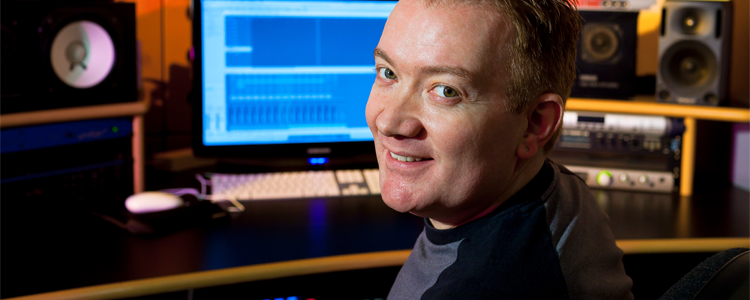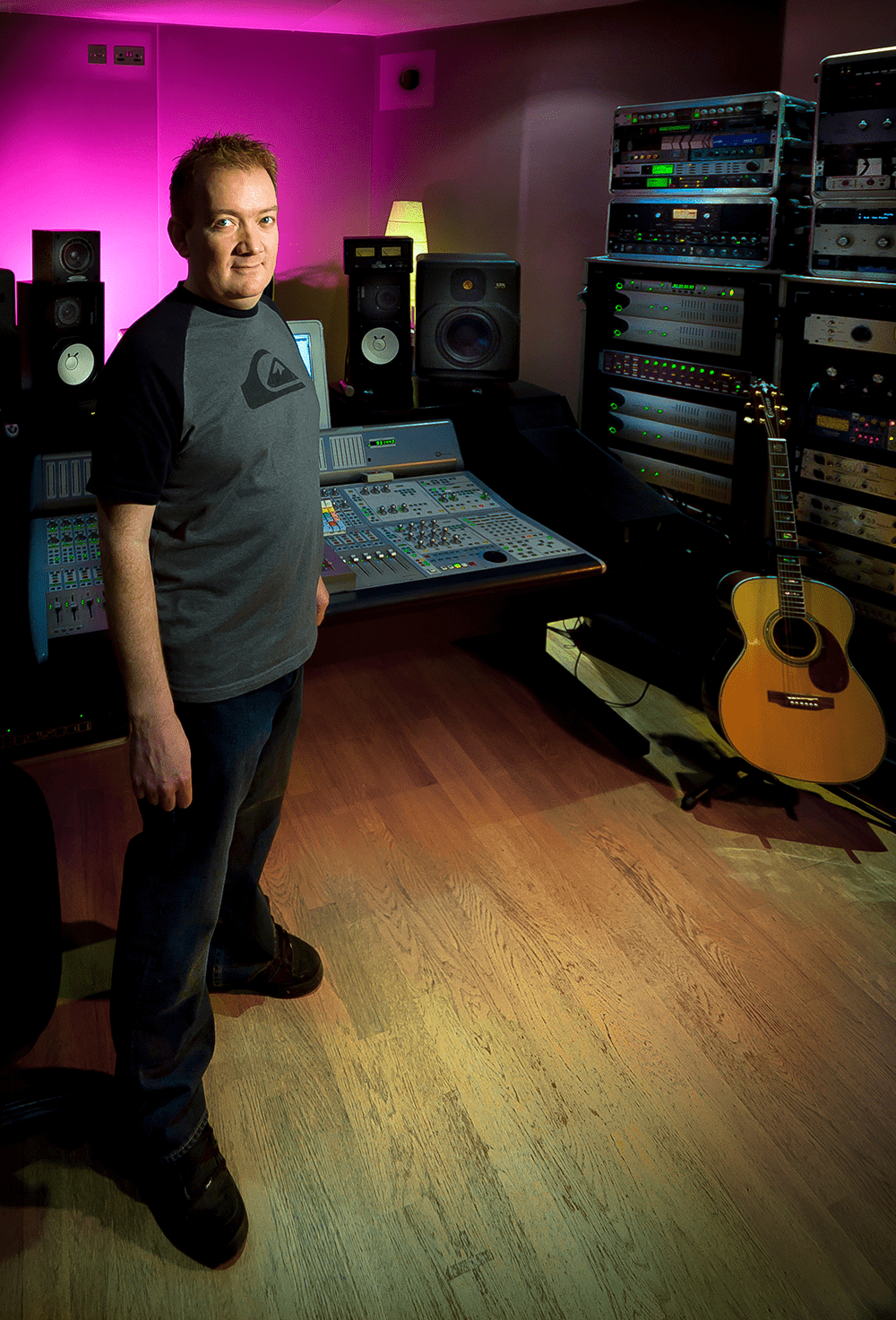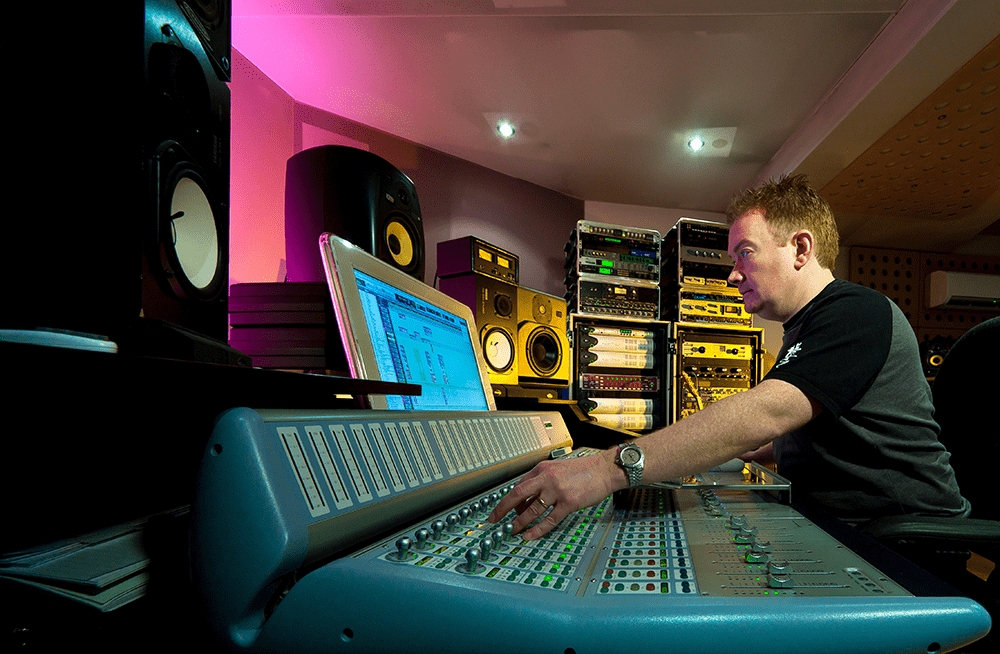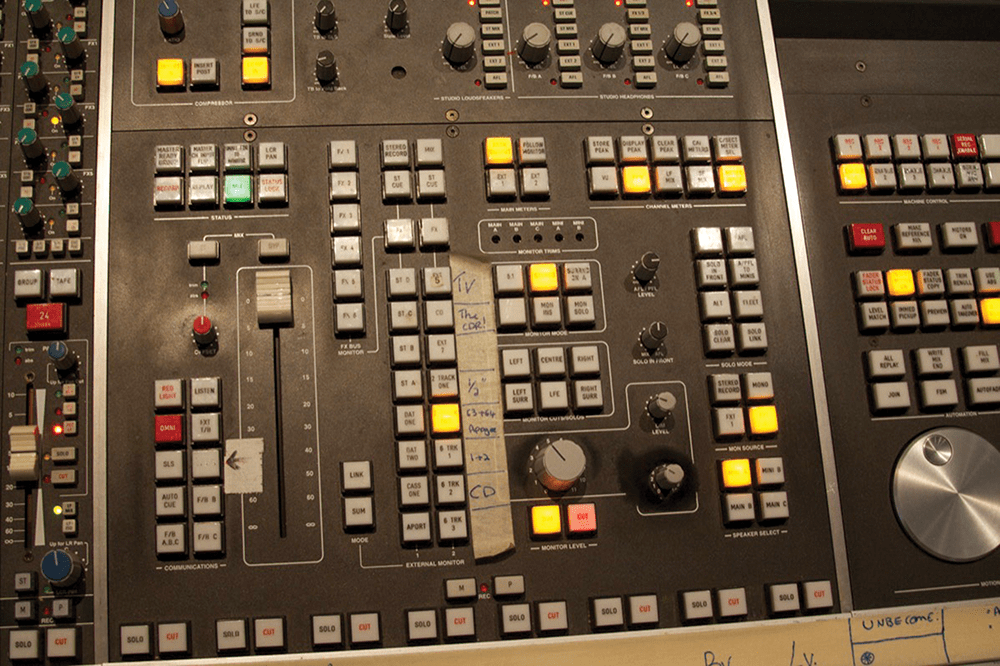On The Pop Scene With Andy Bradfield
From Moulin Rouge to Kick-Ass via the Spice Girls and Sugababes, Andy Bradfield is just as comfortable producing film soundtracks as he is pop records, such as his latest for TV-star-tuned-powerhouse-vocalist Sheridan Smith… With a career that began in earnest at the renowned Olympic studios, Andy Bradfiel has turned his hand to high-profile film and […]

From Moulin Rouge to Kick-Ass via the Spice Girls and Sugababes, Andy Bradfield is just as comfortable producing film soundtracks as he is pop records, such as his latest for TV-star-tuned-powerhouse-vocalist Sheridan Smith…

With a career that began in earnest at the renowned Olympic studios, Andy Bradfiel has turned his hand to high-profile film and pop music with seemingly effortless dexterity; from the toweringly successful Moulin Rouge soundtrack to his latest project, working with TV’s Sheridan Smith on her debut record, Bradfield has seen the music production world evolve over the last few decades. We find out more…
MusicTech: How did you first become interested in music and how did that lead to a career in the industry?
Andy Bradfield: “I started by learning keyboards when I was at school, but I think I always had a bit of a fascination for sound, which led me to recording. My mum and dad saw this and bought me a cassette recorder when i was about 10 – and I was hooked from then on. When I was 14, I went on a recording course at a studio in Essex called Diploma Studios. It was a local studio, but the course was very well thought out and covered all aspects of recording. I did a second course and work experience at the studio, and eventually wrote many letters to studios applying for jobs, but got only a handful of replies. But I did get an interview at Red Bus studios – I worked there for five months when the Townhouse wrote to me that they were conducting interviews for Olympic, I then got offered a job at the revamped studio.”
MT: You started your career in this iconic studio – what are your memories from working at these incredible places?

AB: “How much you absorb and learn, really. It wasn’t training in the sense of going on a course, you were kind of thrown in with engineers and were expected to know the studio… Understanding the patch bay and where everything was and fetching mics and headphones… and, of course, the dreaded recalls, as all were SSL studios, but as anyone who has done that will know: the patching and outboard was all done by hand! A lot of what we did was still analogue tape when I started – DAT and digital tape was starting to appear, as was the DAW in its very early form, I found these advancements fascinating.
“Pretty soon, there were huge changes and a move to DAW-based production, I was a reasonably early adopter of Pro Tools, and starting using it in the 90s when i was first a freelance engineer. You could see how it was going to eventually take over, but it took time for the computers and the tech to get fast enough to replace some of the amazing kit that was in use – so, for a long time, things stayed hybrid. They had to, especially mixing, as the big desks still had the sound and headroom, which early DAWs could not compete with or run enough processing to keep up at that time (or tracks, for that matter).”
MT: What gear and tech does your current studio contain?
AB: “The setup is based around an Avid Icon D-Command 24-fader control surface, which is now attached to a HDX2 system (Formerly a TDM system) and an eight-core UAD Card, plus a bunch of outboard. The D-Command has the XMON – which is an analogue monitor section to control the sources and speakers, plus the headphones etc, and it works really well, I just wish it had more inputs! Pro Tools HD 12 is great for me with the control surface, and I can handle very large sessions with relative ease. I wouldn’t want to mix on a console now – the sessions are too big.”
MT: What DAW, software and plug-ins do you use most often?
AB: “Pro Tools HD 12 and sometimes Logic for programming. Superior Drummer 3 is really fab, I’m a big user of both Native Instruments’ Komplete 11 and Arturia’s Complete Collection, and I love Ivory II. I get deep into Omnisphere for when I need to do any synth programming.”
MT: What physical equipment do you use the most and what are your favourites?
AB: “Quite a wide selection, here’s a few cherry-picked faves: LA-2A, Rupert Neve Designs 5024 mic pre, Apogee Symphony I/O, Bricasti M7 Reverb, Sansamp (Rack One), TLA-100, 1176, Bryston Amp – NS10s and Krk9000Bs. I’ve recently started using a range of Aston microphones, the Spirit is fab on overheads, and as an ‘S’ mic for MS on acoustics, but I also use the Spirit for vocals for some people… I’ve just finished Sheridan Smith’s record, we used the Spirit on her vocal, and we used another pair for drum overheads. We then used the Spirits and the smaller Starlights as an overhead pair on the brass section, and also when we did strings.”
MT: How do you approach mixing projects, and how creatively involved do you get with the artists/composers?

AB: “I usually start by discussing what the band, artist, label or composer want to achieve and, more importantly, if there are any specific problems that they need to overcome. It might sound odd, but sometimes there is something that did not go to plan, and is a problem – so it’s better to know that before I start, and hopefully find a solution during the mixing process.
“Having good communication is very important, as it’s hard sometimes to assume what people need or want from something. I will usually meet and discuss how to go about it, or Skype – and what I think the best way to tackle it is. Usually, the artist or producer or composer is very involved – and I try and get the best out of what I am given to take it to a great place and then refine it, as there are always details that people want to get involved in.”
MT: How do film projects differ from music-artist projects?
AB: “With films, you have to learn you are a small cog in a very big wheel. You have to learn to turn things around quite quickly and also you end up ingesting and outputting a ton of material in a very short time. It’s often quite time-sensitive, as it’s the last piece of the process on most projects.”
MT: How have things changed in the production world during your career?
AB: “Oh, massively, I don’t even know where to start – everything has changed! I mean literally every aspect has changed: tape and desks are gone (mostly). DAWs were non-existent when I started, and now have really taken off. When Pro Tools became more stable and the track count increased, it became a viable option to record directly. Not to mention that, when we did Moulin Rouge back in 2000, we made a decision to not to use any tape at all, simply because of the amount of changes and edits that were taking place all the time during the project. This was only really possible because I had an expanded Pro Tools TDM system and you could have seven 888/24s, which gave 56 inputs and outputs to the desk!
“What I want to avoid is having to think too much. I just want to get on with it and get creative, so they get the technical aspects out of the way at the start.”
MT: What advice would you give to readers embarking on a similar career?
AB: “Practice, practice, practice! Seriously. And listen. People don’t do that enough, they just ‘do’. Tape did do one good thing; it forced you to stop listening, as you had to rewind to the front! That actually wasn’t always a bad thing. Take the time to listen to records you like and try to put it into practice. Don’t believe everything everyone tells you – just because someone says they’re doing x, y or z, doesn’t meant they do it all the time on everything.
“Trust your ears, get good monitors that you understand and learn to listen quietly. There is no magic bullet: recording and mixing isn’t an exact science, but you can learn and improve. Learn from your mistakes. From experience, you understand your mistakes and learn to do it better next time.”
MT: Is there anything you want or need, gear or software wise?
AB: “Gear is great. But it can become excessive and you can convince yourself you need x or y to get the job done. I think possibly the most important thing for me is the computer… It’s now the centre of the studio. Perhaps the faders – I still love having real faders.
“I think now is possibly one of the best times to be making music, the technology finally is making things easier. I felt for a long time when I started mixing that the technology was always fighting me, and to some degree it was. Tape sync, noise, headroom, running out of channels on the board, running out of DSP! The list goes on and on. But it seems much better now we use the DAW to get the work done, and that stuff happens far less now, and I can get on with what I need to do to get the job done and enjoy it! At the end of the day, that’s what this is all about.”